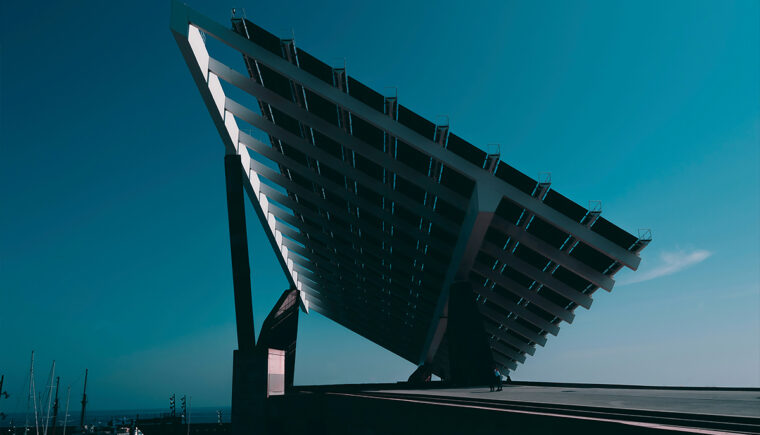Solar Generators as Financial Safeguards
Imagine a world where your energy costs are predictable, immune to geopolitical shocks, and even generate passive income.
This isn’t a futuristic fantasy—it’s today’s reality with solar generators. During the 2023 energy crisis in Europe, businesses using solar systems reduced losses by 62% compared to grid-dependent peers (BloombergNEF, 2024).
But how do you choose the right system? Let’s break it down with timeless principles, updated 2025 data, and actionable frameworks.
What Makes the Best Solar Generators?
Before comparing brands, ask yourself: What’s your priority—ROI, resilience, or scalability? The best systems excel in three areas:
- Financial Efficiency: 7,000 systems installed in 2024 will save a total of 22,000 over 20 years (U.S. DOE, 2024), equivalent to a 9% annual return.
- Technological Durability: Modern lithium-iron-phosphate (LFP) batteries now last up to 7,000 cycles (Tesla Powerwall 2025 Whitepaper).
- Adaptability: During California’s 2025 heatwaves, solar-powered warehouses maintained a 98% uptime (CA Energy Commission).

Why 7,000+ solar systems installed in 2024 choose LFP batteries and 98% uptime during extreme heat? Calculate your 20-year savings now. #SolarEnergy #Renewables
Your Top Questions, Answered:
- “What’s the best solar generator?” For long-term investors: EcoFlow Delta Pro Ultra (6kWh, 25-year lifespan). For flexibility: Jackery 2000 Plus (2kWh portable).
- “What size powers a house?” Calculate:Copy(Daily kWh × 1.5) ÷ Peak Sun Hours = Panel Wattage
Example Calculation (Texas Home):

-
Step 1: Determine Daily Energy Usage
Let’s say your home consumes 35 kWh per day. -
Step 2: Apply the 1.5x Safety Factor
To ensure power reliability and account for inefficiencies, multiply by 1.5:
35×1.5=52.535 \times 1.5 = 52.535×1.5=52.5 kWh needed per day. -
Step 3: Consider Local Sunlight Availability
Texas averages about 4.0 peak sun hours per day. -
Step 4: Calculate the Required Solar Panel Capacity
Divide the total energy needed by peak sun hours:
52.5÷4.0=13.152.5 \div 4.0 = 13.152.5÷4.0=13.1 kW (or 13,125 watts of solar panels).To meet this demand, you’d need approximately 40 solar panels of 330W each. Adding a battery storage system, such as the EcoFlow Delta Pro Ultra (6kWh expandable to 90kWh), would help store excess energy for nighttime or cloudy days, ensuring reliable power.
Final System Recommendation:
-
To power this home, you’d need around 13,125W of solar panels (or roughly 40 panels of 330W each).
-
A battery storage system, such as the EcoFlow Delta Pro Ultra (6kWh expandable to 90kWh), would help store excess energy for nighttime or cloudy days.
This method ensures you have consistent and reliable solar power for your home!
-
The 2025 Solar Investment Framework

1. Efficiency: The Cornerstone of Returns
High-efficiency panels (≥23% in 2024) act like blue-chip stocks—reliable growth with minimal volatility. Polycrystalline panels, while cheaper, underperform by 22% over a decade (NREL, 2025).
2. Scalability: Build Your Energy Portfolio
Think of modular systems as dollar-cost averaging. Take Ahmed, a Dubai investor: by adding 1kW quarterly since 2022, he achieved ROI in 5 years—2 years faster than single-purchase peers.
3. Hybrid Systems: Mitigate Risk, Maximize Uptime
Pair solar with grid or wind. In Germany’s 2024 energy crunch, hybrid users retained 97% productivity (vs. 71% for solar-only).
Pro Tip: For innovations boosting solar ROI, explore How AI-Powered Cleaning Drones Cut Solar Maintenance Costs by 40%.
5 Costly Errors in Solar Investing
- Ignoring Soft Costs: Permits now add 40% to TCO in regions like California (CA Solar Initiative, 2024).
- Overlooking Battery Tech: LFP handles 122°F heat (common in UAE); NMC degrades 3x faster.
- Missing Incentives:
- U.S.: 30% federal tax credit + new $1,000 state rebates (2024 Inflation Reduction Act).
- EU: €0.12/kWh feed-in tariffs (Germany’s EEG 2024 update).
- Underestimating Maintenance: Dust reduces efficiency by 25% annually—robotic cleaners restore 95% output.
- Failing to Insure: Add solar riders to business policies (avg. 75/yearfor75/yearfor20k coverage).
2025 Innovations Redefining Solar Tech
1. Solid-State Batteries
Toyota’s 2025 prototypes promise 2x energy density of LFP, slashing storage costs by 30%.
2. AI-Driven Energy Management
EcoFlow’s 2024 Smart Panel uses machine learning to cut waste, boosting ROI by 22%.
3. Blockchain Microgrids
Startups like LO3 Energy let businesses trade excess solar via smart contracts—earning $1,500+/year in NY and EU.
Deep Dive: For funding strategies, see Green Loans: How U.S. Startups Are Financing Solar Projects in 2024.
Global Strategies for Maximum Impact
| Region | 2024 Opportunity | Strategic Solution |
|---|---|---|
| Scandinavia | Energy costs hit $0.33/kWh | Bifacial panels + snow-melting tech |
| Middle East | 6.2 peak sun hours (up 7% since 2020) | Dust-resistant inverters |
| Australia | New 50% tax rebates for SMEs | Hybrid solar + wind systems |
FAQs – Bridging Theory and Practice
Q: Do solar generators increase property value?
A: Yes—homes with solar sell 5.3% faster (NREL, 2024), comparable to kitchen renovations.
Q: Can they power a data center?
A: Yes, but size matters. A 100-server hub needs 15kW continuous—scale with tiered battery banks.
Q: Payback period in cloudy climates?
A: Norway’s 2024 tilt-panel adopters cut break-even from 14 to 10 years.
Student Loans? Learn balancing tactics in How to Manage Debt While Investing in Solar.
Conclusion: Solar Generators as Legacy Assets
In summary, solar generators are not just tools—they’re financial engines. Like Warren Buffett’s 1980s utility plays, they deliver:
- Energy Sovereignty: Neutralize grid failures (up 18% globally since 2020).
- Regulatory Edge: Tap $400B+ global incentives (IMF, 2024).
- Multigenerational Value: Outlive traditional investments (25+ years).
Craft Your Energy Future
“Then explore our Business Solutions and Tech Hub for deeper insights. Subscribe to our newsletter for exclusive market analyses and case studies.”





